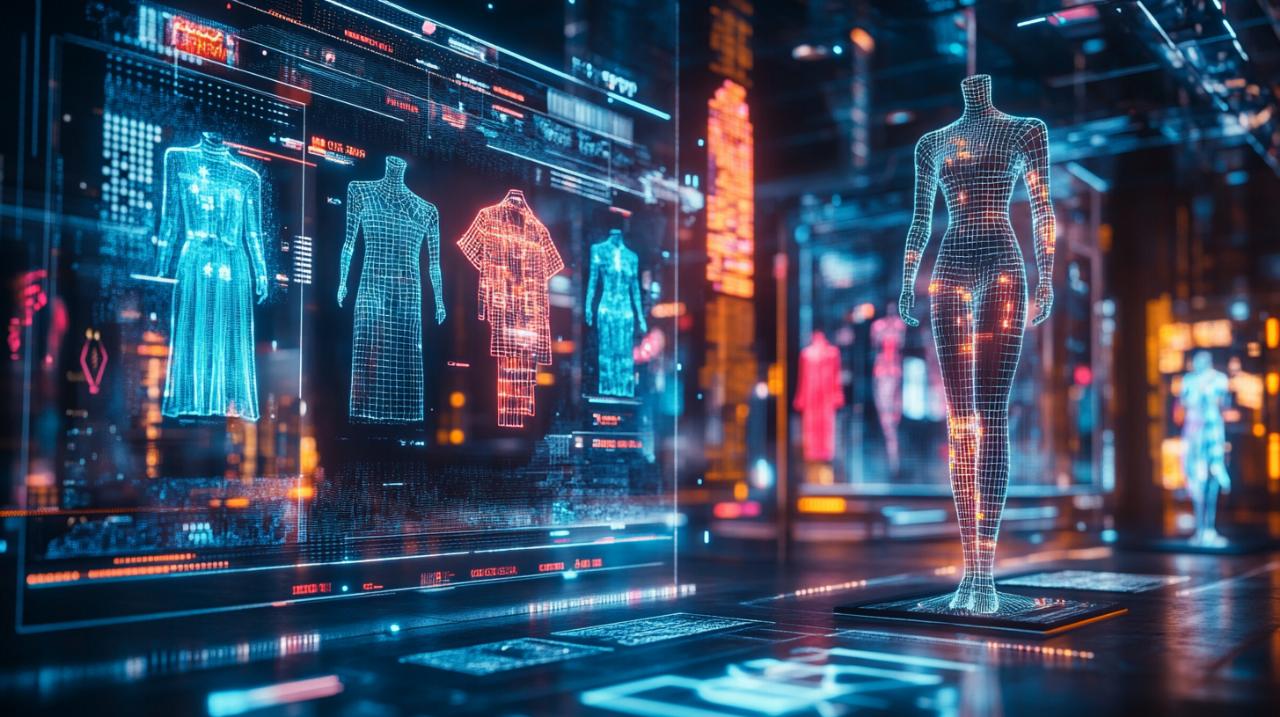The landscape of retail has undergone a remarkable transformation over recent years, with digital platforms fundamentally altering the way individuals engage with style and make purchasing choices. Fashion has moved beyond traditional high street shopping and embraced the immediacy and accessibility of the internet, creating a dynamic environment where preferences shift rapidly and consumers possess unprecedented influence. This shift has not only redefined the mechanics of buying clothes and accessories but also introduced entirely new psychological and social dimensions to the act of shopping itself. Understanding these changes offers valuable insights into the motivations and behaviours that drive modern consumer culture.
The Evolution of Digital Fashion Consumption and Consumer Behaviour
The emergence of digital natives has been a pivotal force in reshaping the fashion industry. Generations born into a world saturated with technology, particularly those born between the late nineties and early twenty-tens, have grown up with smartphones and social media as integral parts of their daily lives. These individuals bring significant buying power to the marketplace, yet their expectations differ markedly from previous generations. They prioritise convenience, speed, and value for money, seeking seamless experiences that blend browsing, comparison, and purchasing into a single, frictionless journey. This demographic has become the catalyst for an industry-wide pivot towards e-commerce, mobile shopping, and omnichannel strategies that connect online and offline experiences.
Sustainability and ethical consumption have also gained prominence among these shoppers, reflecting a broader cultural shift towards accountability and transparency. A substantial portion of this group actively boycotts brands that act unethically, signalling a willingness to align spending habits with personal values. This trend extends to the types of products being purchased, with clothing and footwear remaining dominant categories, but with a growing interest in sustainable fashion, beauty and personal care items, and even groceries sourced responsibly. The desire for diversity and inclusion further influences purchasing decisions, as consumers gravitate towards brands that champion representation and social justice. This evolving consumer profile demands that retailers rethink not only their product offerings but also their messaging, partnerships, and overall brand positioning.
How social media platforms shape modern fashion preferences
Social media has democratised access to fashion in ways previously unimaginable, transforming it from an exclusive domain of designers and editors into a participatory space where anyone with a smartphone can influence and be influenced. Platforms such as TikTok and Instagram serve as virtual marketplaces and inspiration hubs, where users discover new styles, share outfits, and receive real-time feedback from their peers. In certain regions, nearly all members of the younger demographic use social media regularly and have discovered fashion items there before making a purchase. This level of engagement underscores the central role these platforms play in shaping preferences and driving demand.
The visual nature of these channels makes them particularly well suited to fashion, as images and short videos can convey mood, fit, and styling in ways that text alone cannot. Brands leverage this by creating direct-to-consumer campaigns that bypass traditional advertising channels, reaching audiences where they already spend their time. Data harvested from social media interactions provides invaluable insights into emerging trends, enabling retailers to respond swiftly and tailor their offerings to match consumer desires. This rapid feedback loop has accelerated the pace at which online fashion trends emerge and fade, compelling brands to remain agile and innovative in their approach.
The rise of influencer-driven shopping decisions
Within this digital ecosystem, influencers have emerged as powerful arbiters of taste and style. Their recommendations carry considerable weight, with a substantial majority of consumers reporting that they have made purchases based on endorsements from personalities they follow online. This phenomenon is particularly pronounced among younger shoppers, who view influencers not as distant celebrities but as relatable figures whose opinions they trust. The authenticity and perceived accessibility of influencer content create a sense of connection that traditional advertising struggles to replicate, making these partnerships a cornerstone of modern marketing strategies.
The influence extends beyond mere product promotion, as these individuals often embody the values and aesthetics that resonate with their audiences. Whether championing sustainable practices, promoting inclusivity, or showcasing the latest athleisure trend, influencers shape not only what people buy but also how they think about fashion and consumption. Brands that collaborate effectively with influencers can amplify their reach, boost awareness, and drive sales, while those that fail to engage with this dynamic risk being left behind. The result is an industry where partnerships and collaborations have become as important as the designs themselves, blurring the lines between content creation and commerce.
Understanding the psychological drivers behind trend-based purchasing

The motivations that propel consumers to embrace new styles are as complex as they are compelling. Fashion has always been a means of self-expression, a way for individuals to communicate their identity, values, and aspirations to the world. In the digital age, however, this expression is amplified and accelerated by the constant stream of content and the pressure to remain relevant within social circles. The desire to keep up with trends is not merely about aesthetics but about belonging, recognition, and the satisfaction of being part of a shared cultural moment. This psychological dimension is critical to understanding why certain trends gain traction and others fade into obscurity.
Emotions play a central role in this process, as fashion trends evoke desire, excitement, and even urgency. The visual richness of online platforms heightens these responses, transforming casual browsing into an immersive experience that can quickly lead to a purchase. The convenience of mobile shopping further lowers barriers to transaction, enabling consumers to act on impulse without the need to visit a physical store. This seamless integration of inspiration and acquisition has fundamentally altered the relationship between consumers and fashion, making it more immediate and personal than ever before.
The Fear of Missing Out and Its Effect on Fashion Choices
One of the most potent psychological forces at play in the digital fashion landscape is the fear of missing out, a phenomenon whereby individuals feel compelled to engage with trends or products for fear of being left behind. Social media amplifies this anxiety by offering a constant window into the lives and wardrobes of others, creating a sense that everyone else is participating in something exciting and current. This perception, whether accurate or not, drives consumers to make purchases they might otherwise delay or forgo entirely, fuelling a cycle of rapid consumption and ever-shifting preferences.
This fear is particularly pronounced among digital natives, who have grown up in an environment where social validation is often measured in likes, shares, and comments. The desire to project a curated and up-to-date image online motivates frequent wardrobe updates and a willingness to experiment with new styles. Retailers capitalise on this by emphasising limited availability, exclusive releases, and collaborations with influencers, all of which heighten the sense of urgency and scarcity. The result is a marketplace where timing and trendiness are as important as quality or price, and where the line between genuine preference and socially driven compulsion can become blurred.
How visual content transforms browsing into buying
The power of visual content in driving purchasing decisions cannot be overstated. Images and videos provide a level of detail and context that text-based descriptions struggle to match, allowing consumers to imagine how a garment might look and feel in their own lives. Platforms that prioritise visual storytelling have therefore become natural homes for fashion content, offering brands the opportunity to showcase their products in dynamic and aspirational ways. Whether through polished editorial imagery or user-generated snapshots, visual content bridges the gap between inspiration and action, turning passive viewers into active buyers.
The shift towards mobile commerce has further amplified this effect, as smartphones enable consumers to discover, compare, and purchase items within moments of encountering them online. The convenience of this process reduces friction and encourages spontaneous decisions, particularly when combined with features such as one-click checkout and instant payment options. Real-time feedback from peers and influencers adds another layer of reassurance, as consumers seek validation for their choices before committing to a purchase. This combination of visual appeal, convenience, and social proof has redefined the shopping experience, making it more engaging and responsive to the rhythms of contemporary life.
In conclusion, the interplay between online fashion trends and shopping habits reflects broader changes in consumer behaviour, technology, and culture. From the rise of digital natives who demand convenience and ethical accountability to the influence of social media platforms and personalities who shape preferences in real time, the fashion industry has entered a new era defined by speed, accessibility, and empowerment. Understanding these dynamics is essential for brands seeking to thrive in a marketplace where trends emerge and evolve with unprecedented rapidity, and where consumers wield both the tools and the inclination to shape the industry in their own image.







